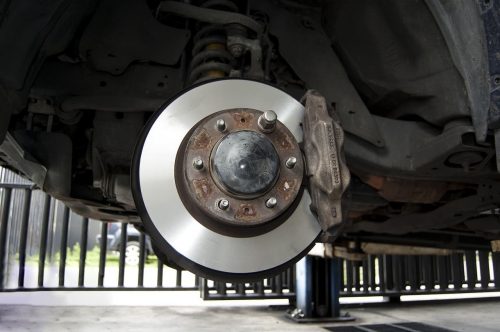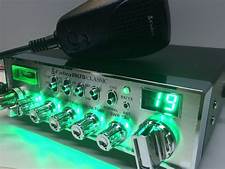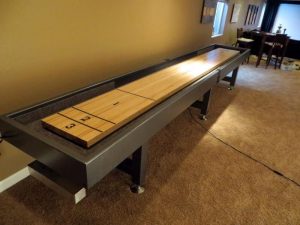Organic vs Ceramic vs Semi-Metallic Brake Pads: Which One is Good?
Which brake pads are best for your vehicle, confused? We have compared 3 types of brake pads to fade away the doubt. Organic vs Ceramic vs Semi-Metallic brake pads; three are unique on each of their perspectives but still you have to figure out what to choose for a smooth ride.
Braking is as essential as the ability of a vehicle to accelerate — slowing down whether to glide tightly through fast curves or just stopping before a red light.
No matter what a car is used for, its brakes are essential, and choosing the right type of brake pad is also crucial.
In the present-day automobile industry, brake pads that are produced commercially for different types of drivers around the world are categorized into three different types: organic, ceramic, and semi-metallic.
To answer which of these three brake pads are the best, the short answer is none.
The best brake pad still relies on how you will use it; whether it’s for racing, daily driving, or for cars that you seldom put mileage on.
Furthermore, there are trade-offs when choosing a brake pad.
For example, you might have a high performing brake pad that wears out quickly, a quiet and durable brake pad that is expensive, or a cheap brake pad that is not for performance driving.
There is no in-between when choosing brake pads, and that is normal.
The choice might confuse you as of now, but we are here to help you! The best way to understand which type of brake pad suits you is to let us explain each type to you together with their respective pros and cons.
What Are Organic, Ceramic, and Semi-Metallic Brake Pads?
01. Organic Brake Pad
Organic brake pads are constructed using various fibers that are bound with resins.
Some of the materials that compose organic brake pads are glass, rubber, kevlar, and other materials.
Compared to ceramic and metallic brake pads, organic brake pads are the cheapest to manufacture.
Around 67% of brand new cars in the US come with organic brake pads.
Compared to ceramic and semi-metallic brake pads, organic pads are quiet and not so rough on the brake rotor.
Using this type of brake pads will reduce the chance of buying a new brake rotor, which could be a pretty expensive repair.
However, the cheap cost of organic brake pads is seen in its durability and performance.
Organic brake pads tend to wear out quickly, so you might have to change them more often. Their wear ability also causes the pads to produce more dust than other types of brake pads.
When using these brake pads, you will also need to put more pressure on the brake pedal as organic brake pads are quite compressible and will produce a “mushy” feel.
An organic brake pad will also underperform at extreme temperatures, so it is best to stay away from organic brake pads if you were to use your car for the race track.
Organic brake pads are perfect for urban drivers who are looking for a low-price option as they are cheap to replace.
- Quiet
- Easy on the brake rotor
- Low manufacturing cost
- Wears out quickly
- Produce a lot of brake dust
- High compressibility
- Less braking performance under extreme temperatures
- Not for performance driving

02. Ceramic Brake Pad
Developed around the 1980s, the ceramic brake pad is composed of dense ceramic material with embedded copper fibers.
Ceramic brake pads are durable and will last a considerable time before wearing out.
Using these brake pads also mean less brake cleaning as ceramics don’t produce a lot of brake dust as opposed to semi-metallic brake pads.
When engaged, ceramic brake pads produce noises above the frequency of the hearing range of humans, so they are practically quiet.
Despite their durability and quietness, ceramic brake pads aren’t ideal for extreme temperatures, such as cold climates or racing conditions.
Compared to the semi-metallic variant, ceramic brake pads cannot dissipate heat very well due to the insulating property of ceramics.
Thus, the heat from the braking system will not propagate but stay into the rotor and the other parts of the system.
Additionally, ceramic brakes are also the most expensive type of brake pads due to costly manufacturing costs.
Ceramic brake pads are suitable for drivers that use their cars for traveling around the city or in the country as long as the climate is not very cold.
We find these brake pads to be a better investment than organic brake pads since these are durable, though you have to pay the price.
- Durable and long-lasting
- Less brake dust
- Quiet
- Most expensive type
- Not ideal for extremely cold environments or racing conditions
- hotter brake system
03. Semi-metallic Brake Pad
Among the three brake pad types, semi-metallic brake pads are the most versatile. They are composed of 30% to 65% metal such as iron, steel, and copper.
Apart from that, they also come with friction modifiers, fillers, and graphite lubricants to improve their overall performance.
Compared to ceramic and organic brake pads, semi-metallic brake pads are the best in terms of overall braking performance.
These brake pads could produce friction at a more extensive temperature range, so they fit well in the wheels of race cars.
The properties of metals such as conductivity and hardness in the brake pads also allow better heat dispersion and a substantial braking experience for drivers.
Drivers will not need to exert more effort into the brake pedal as semi-metallic brake pads come with low compressibility, unlike organic brake pads.
Every type of brake pad has a shortcoming, and semi-metallic brake pads are no exception.
Semi-metallic brake pads often induce the most strain and wear on wheel rotors. Additionally, they are also the noisiest and messiest type of brake pad there is.
Furthermore, they produce more brake dust than ceramic and organic brake pads.
Thus, a car that uses semi-metallic brake pads often has to wash its brakes since brake dust could corrode the alloy of rims.
Semi-metallic brake pads are perfect for drivers who take their cars to the race track due to their outstanding braking performance.
They’re not suitable for everyday driving since they produce strain and wear on brake rotors and leave corrosive brake dust on the rims.
In the long run, everyday usage of these pads will leave you with an expensive repair on new rotors and rims.
- Better braking performance than organic and ceramic
- Cooler braking systems
- Wide operating temperature range
- Low compressibility
- More strain and wear on rotors
- Noisiest type
- Produces lots of brake dust
Which is The Best 0ne For Your Vehicle?
Again, no brake pad has it all. We have explained every type with their unique characteristics, and we hope that you have learned a lot.
The next time your pads need replacing, you already have an idea which type of brake pad you will need!
For more information links here;
https://www.familyhandyman.com/automotive/car-brakes/how-to-change-front-brake-pads/






Post Comment